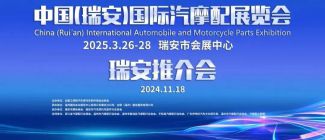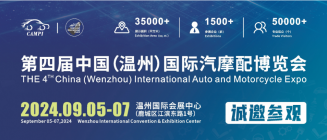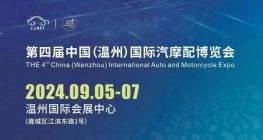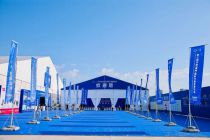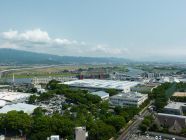It used to be common for a family of three generations to open the public.
Even when someone buys a car, there are always people who recommend Volkswagen around them. They tell us: Buy a Volkswagen, look at the Volkswagen Santana back then, it is both good-looking and durable, and it doesn’t drive bad for many years... Volkswagen seems to be Their "faith".
As one of the first joint venture brands to enter the Chinese auto market, Volkswagen has gradually extended its image from the wide road to the hearts of consumers after launching the Santana sedan and becoming a supercar of a generation of Chinese people. At that time, the auto market was in the age of the three most important cars. Santana, Jetta, and Beverly filled the imagination of a generation of Chinese consumers about cars.
Among them, two of the three are products of popular brands, and these three have a long existence and sales life in China, and they have a high degree of recognition in several generations. In addition, later, Fukang ( Citroen) is gradually going downhill, basically only two Volkswagen brands are left, and even Jetta has become a sub-brand independently, which shows the strong vitality.
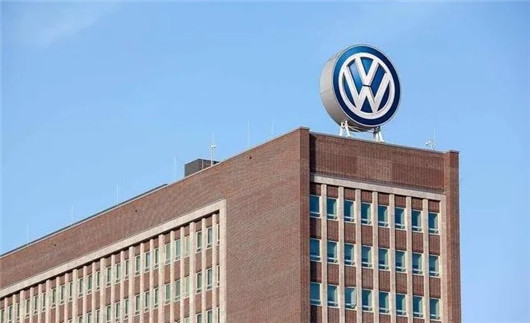
When the public has a generation of trust and dependence, it has been smoothly in the Chinese market for many years, and it has also become a smooth sail. In this context, Volkswagen is the best-selling brand in the Chinese auto market almost every year. Even if the auto market is sluggish, Volkswagen's sales are still hot.
More importantly, many popular brand products can get good sales when they go on the market, even when the price and configuration are not satisfactory. Volkswagen in the Chinese market is like an unsinkable Noah's Ark, even if the wind and rain are ruthless, it can be resolved into the invisible.
However, this kind of happy spring breeze of the public has undergone subtle changes in the past two years.
The share dropped sharply, the situation is critical
In the first half of this year, Volkswagen delivered more than 1,739,500 vehicles in the Chinese market. With a market share of 17.5%, Volkswagen continued to maintain its leading position in the market.
Judging from the market ranking, this result seems to be pretty good. But if compared with previous years, it is very embarrassing. Data show that in 2020, Volkswagen will deliver 3.85 million vehicles in China, a year-on-year decline of approximately 9.1%, with a market share of 19.3%. In the previous year, these two figures were 4,233,600 vehicles, 19.8%.
The sales data and market share in recent years are compared, as if a series of declining numbers are in front of you, and behind it is the current situation of Volkswagen in China: Wang Xiaoer's New Year - one year is worse than one year.
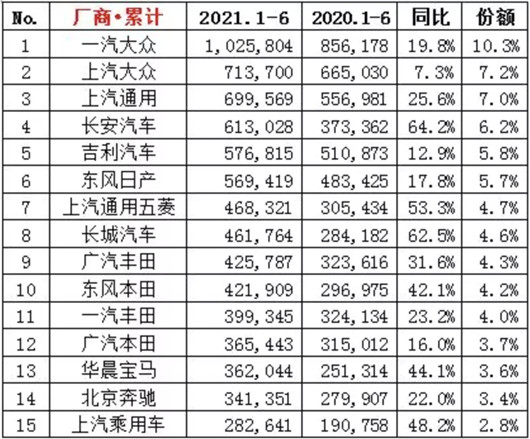
If it is said that the market is cold and the sales volume of Volkswagen has declined, then, due to the lack of cores in the first half of the year, the production and sales of the domestic passenger car market completed 9.84 million and 10.007 million, respectively, an increase of 26.8% and 27% year-on-year, respectively. The market share Basically, the overall structure remains stable. Therefore, the decline of Volkswagen is definitely not just a phrase "lack of core" can make sense.
To take a step back, if the half-year data does not include the peak sales season and year-end impulse in the second half of the year, which is somewhat one-sided and unobjective, then the data for the full year of 2020 can also explain the problem.
In 2020, Volkswagen delivered 3.85 million vehicles in China, a year-on-year decrease of approximately 9.1%. In the same year, vehicle sales in the Chinese market were 25.311 million vehicles, a year-on-year decrease of only 1.9%. Under the impact of the epidemic, China's auto market has achieved a deep V rebound with strong endogenous growth momentum, but Volkswagen has not achieved a real out of the haze.
Although Volkswagen has encountered bottlenecks in its development in China, the situation of North and South Volkswagen is not exactly the same.
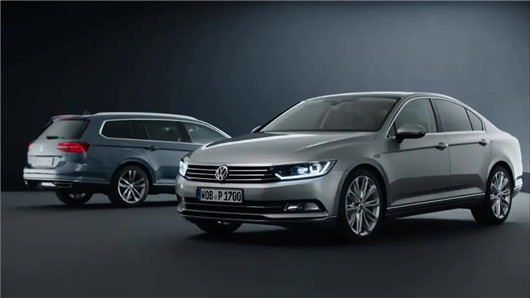
North Volkswagen, under the blessing of a number of best-selling models, has an annual sales volume of 2.162 million, becoming the only passenger car company with sales exceeding 2 million in 2020. At the same time, Volkswagen's sales in 2020 will fall to 1.56 million.
The gap between the two Volkswagens is getting wider and wider. For Southern Volkswagen and the entire Volkswagen Group, it is hard to hide the sadness.
Especially the SAIC Group. Since its sales exceeded one million in 2010 and 2 million in 2016, SAIC Volkswagen has been the sales and profit cow of SAIC. Until 2020, the prosperous SAIC Volkswagen fell for a whole year, and the total annual sales fell by 24.7%, which became the "burden" of SAIC Group's recovery.
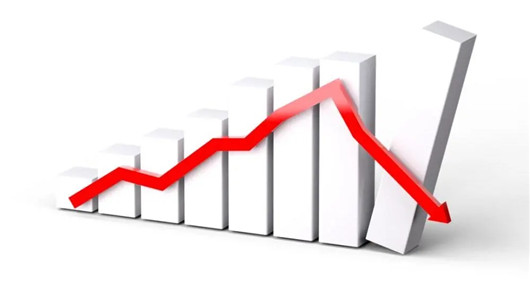
The nest is overwhelmed, and SAIC Volkswagen’s profitable cow has no milk. The net profit of SAIC’s shareholders is estimated to be about 20 billion yuan, a year-on-year decrease of about 5.6 billion yuan, a decline of more than 20%.
Although SAIC Volkswagen’s streak has stopped, it means that its market performance has improved. Since the beginning of this year, SAIC Volkswagen’s wholesale volume has been as high as 110,000 and as low as 50,000. Together with Auto-GM, it has gradually “matched” the group’s passenger car segment.
Trace to the bleakness of SAIC Volkswagen, many people will wait and see the thunder from Christmas Eve.
appearance and internal factors
On Christmas Eve in 2019, China Insurance Research Institute announced the Passat's crash evaluation results. The bending and collapse of the A-pillar made the Passat, the iconic Wolfsburg model, a weakness for Volkswagen. "Next, the bad mood of consumers broke out completely at this moment.
Subsequently, the keyword "Passat 25%" continued to ferment on the media and social platforms, and even the past events such as the 315 gala several years ago were mentioned again-SAIC Volkswagen encountered a serious public relations crisis.
It’s just that SAIC Volkswagen seems to have not dealt with this crisis well, and it can even be said that it has stepped on the wrong point every time. When consumers needed to discuss the results of the collision, they chose to deal with it coldly. When the wave of incidents gradually receded, Jia Mingdi, the general manager of SAIC Volkswagen Sales Company at the time, jumped out and made the statement that "safety is the public DNA" again. Stir up a thousand waves...

Although many people define the Passat collision event as the fuse of the South Volkswagen and even the Volkswagen brand's fall, this is only a superficial phenomenon, and the decline in brand power and product power behind it is the internal reason.
For North Volkswagen, the overall model sales are relatively impressive, but the sales of the new CCs that have been listed before have been mediocre. Compared with the mid-range Magotan and Passat, the overall performance is very sluggish; Tange and Tanyue are erratic, starting from five. For thousands to 20,000 vehicles, the new energy ID series still has a long way to go. Fortunately, the main models Golf, Sagitar, Bora, etc. have good sales.
South Volkswagen’s models are even much higher than those of North Volkswagen. Classic models such as POLO, Santana, Lingdu, Lavida, Passat and Tiguan L are all under its banner. Who would have thought that the Southern Volkswagen, which has so many resources and blessings, has carried the best equipment in the past two years and faced the most venomous beatings.
Harvest the cause, plant and fruit, follow the vines and follow the vines, and you will find that the "things" of the Southern People have a cause.
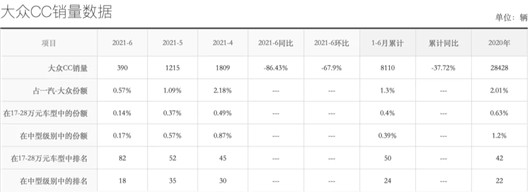
Although the product lineup is rich, like Polo, the wheelbase has been lengthened according to Chinese consumers' preferences, which is very popular, but the blind increase in prices makes the situation awkward, and now it can only rely on terminal price cuts to get sales; Lingdu also gradually faded out of sight due to embarrassing positioning; Santana The position of the car, SUV, and MPV has been continuously lost; the Passat, which finally caught fire, was eventually destroyed by a collision (cutting corners). Although the three flagship models (Huiang, Tourang, and Weiran) covered the sedan, SUV, and MPV market segments, the results Look, its high-end process has not been so smooth...
I can’t help asking people, can the South Volkswagen Group now only rely on a non-profitable Lang Yi to support the scene?
When the Southern Volkswagen stepped into the abyss step by step, Skoda would not be alone.

Last summer, in an afternoon that was too normal to be normal, Skoda put aside its four-year stubbornness, renamed the official WeChat account to "SAIC Volkswagen Skoda" and returned to the embrace of South Volkswagen.
The scorching summer burns Skoda's body, and the cold market lashes at Skoda's soul. The market beats mercilessly again and again, pushing the fond memories of Skoda's annual sales of 340,000 vehicles back to the reality of monthly sales of less than 4,000. Even the news of the disbandment of the marketing team earlier this year makes people understand the truth: nothing will last forever. .
Skoda is like this, and so is the public.
Feelings recede, why should I rely on it?
On the surface, some of Volkswagen’s classic models are still selling well, and the market share is still dominating the list. However, new products such as the new CC, Huiang, Weiran and other brand-new products and flagship products have successively declined and are no longer welcomed by the market. The collapse of consumer beliefs.
Most of the last generation of consumers have experienced the Santana era, so they will deduce the quality of today's popular products based on the quality of the old Santana. However, time has changed. With the post-90s and even post-00s consumers dominating the auto market, everyone has their own selection criteria when buying a car. Therefore, it is normal for the public who suspected of being a "domestic baby" to have a lower priority among young people.
In addition to changes in consumer groups, the decline of the public stems from issues of sincerity and attitude towards Chinese consumers.
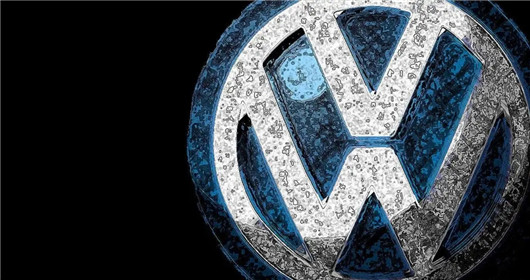
For example, the sales of the A0-class car product Polo have been good, but after SAIC Volkswagen launched the new Polo Plus, the length of the car was increased by 83mm, and the configuration was slightly increased, but the starting price directly rose to about 100,000, and the price was sold to a joint venture. At the level of compact cars, this blind "confidence" continues to consume the market's goodwill for popular brands.
Not only that, when launching new cars in the Chinese market, Volkswagen paid relatively little attention to the configuration, and there was almost no increase in the number of replacement products without price increases. Not to mention its own brands, even when Toyota is in the stack configuration, Volkswagen's approach is obviously contrary to the general market trend.
After so many years, sales have gone up, but the word of mouth directly swooped down on the ground. The problems of burning oil, broken axles, dual-clutch failures, and reductions followed one after another, and they were even named 3.15 twice. Then, Volkswagen China and North and South Volkswagen continued to file recalls with the State Administration of Market Supervision and Administration for the recall of imported and domestic Volkswagen brand vehicles.
It can be said that facing the big cake of the Chinese auto market, the people who have been deeply involved in the Chinese market for more than 30 years are indecent and out of style.
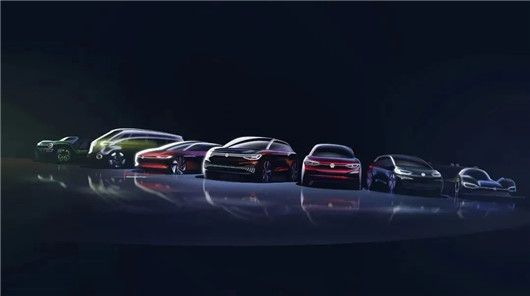
Of course, the downturn of Volkswagen still has something to do with the background of the entire auto market, but for such a brand with a faith advantage, the continuous decline is too abnormal and unbelievable, especially when compared with the Japanese Randa, the same auto market environment, only It can be said that Volkswagen's ability to withstand risks in the Chinese market is declining compared with the Japanese counterparts represented by the latter.
Last year, under the background of public opinion that "China and Japan must have a battle", the market share of Japanese brands reached 23.1%, while that of German brands reached 23.9%. The gap between the two was further narrowed. Civic, CR-V, Corolla, Highlander, Sylphy, Teana and other models have strong competitiveness among products of the same level. Although Volkswagen’s Lavida, Tiguan, and Santana are also very competitive, they have limited star products. Can not stand the Japanese, American, independent, second-line luxury encirclement and encroachment.
Seeing that the traditional advantage project fuel vehicle segment has problems in the Chinese market, coupled with the impact of the European emission gate, Volkswagen has to accelerate the process of electrification in the face of the general trend of the industry.
It’s just that the Volkswagen ID family, which often dominates the European new energy sales list, has become a "horse and horse" in the Chinese market. The half-year sales barely reach the level of 10,000 vehicles and are left to the slaughter.
Although sales reached 5,500 in July, it is hard to say whether it can maintain a high level of market performance. Because the radical new energy market in China is not comparable to Europe, new car-making forces, cross-border capital, traditional high-end independent auto brands...the tigers and wolves are waiting for the hegemony. Chinese consumers of new energy vehicles have no brand beliefs. They choose whoever has the best configuration, design, intelligence, and price. In front of them, ID family, brand is not an advantage, MEB is not an advantage, and smart electric is not an advantage either.
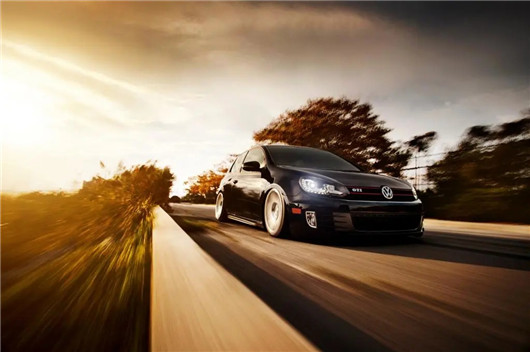
As a traditional car company with a long history, by entering the Chinese market earlier, Volkswagen has enjoyed a strategic dividend. While breathing, the market is changing, the public encounters the collapse of consumer beliefs, the advantage of fuel vehicles is eroded, the late entry of electrification is not a climate, and its market performance decline is inevitable.
Hundred-legged insects are dead but not stiff, and the public's chess game is far from irreversible. With a long history of success, with a huge and flexible volume, with a wealth of products that can be played, as long as the "regret chess" can be repaired in time, the public is still the same. In the interim, what the public has to do is to keep thinking and then act, from respecting the market to respecting users, from remediating the image to restoring reputation.
Because true trust is a down-to-earth product reputation, not a castle in the air of brand belief.
Notice on Holding the Rui'an Promotion Conference for the 2025 China (Rui'an) International Automobile and Motorcycle Parts Exhibition
On September 5th, we invite you to join us at the Wenzhou Auto Parts Exhibition on a journey to trace the origin of the Auto Parts City, as per the invitation from the purchaser!
Hot Booking | AAPEX 2024- Professional Exhibition Channel for Entering the North American Auto Parts Market
The wind is just right, Qianchuan Hui! Looking forward to working with you at the 2024 Wenzhou Auto Parts Exhibition and composing a new chapter!
Live up to Shaohua | Wenzhou Auto Parts Exhibition, these wonderful moments are worth remembering!
Bridgestone exits Russia and sells assets to S8 Capital
Free support line!
Email Support!
Working Days/Hours!
